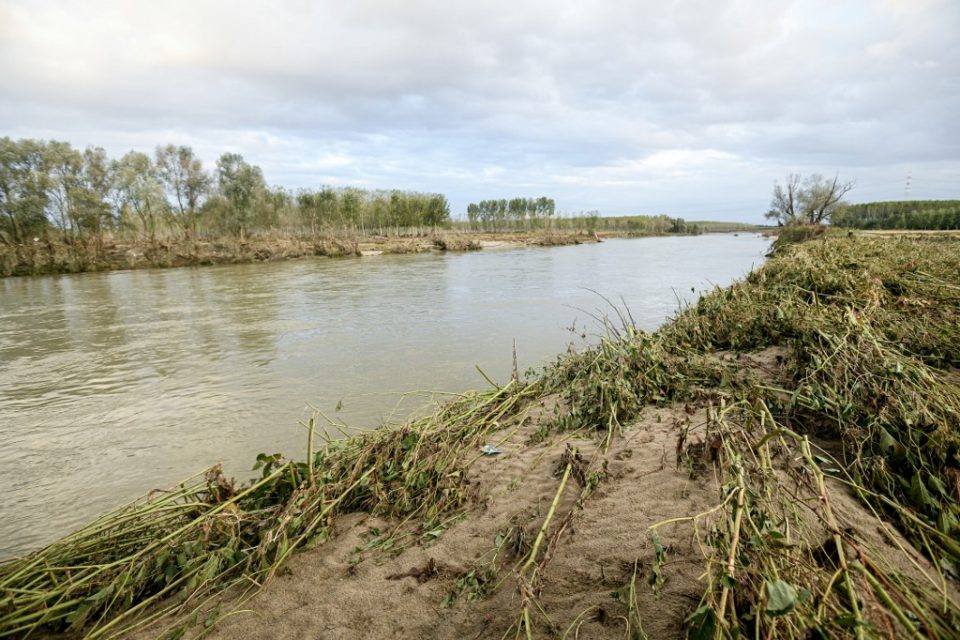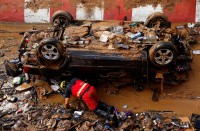
by Francesco Gilioli with Ella Ide in Rome
PALESTRO, Italy (AFP) — With a deafening roar, the swollen Sesia river swept down the Alpine valley in northern Italy to engulf the plains below, drowning the country’s so-called “golden triangle” of rice paddies in mud.
Storms at the weekend, when the region was lashed by half the yearly average rainfall in just one day, dealt a severe blow to Europe’s biggest rice producer, flooding the marshy area where 80 percent of Italy’s rice is grown.
“It was like the sea rising around us,” farmer Noemi Leva, 24, told AFPTV. “It just kept coming, we saved what we could.”
Leva said she risked losing half her 55 hectares (135 acres) of crop. “It will be very difficult to get back on our feet,” she said.
The raging waters which hit Saturday drowned hundreds of sheep and goats, ruined olive crops, brought down bridges and triggered landslides.
Italy’s biggest agricultural association Coldiretti said the storm had caused more than 300 million euros ($350 million) worth of damage.
Edoardo Merlo, who runs a farm near the Sesia with his father, said it was “an unimaginable emergency”.
“The extent of the damage is only coming to light now, as the waters recede,” the 32-year old said glumly, adding that many farms in the area “risk closing for good”.
The rice Merlo had already harvested was stored at ground level, so it soaked up dirty river water and must now be binned.
“The remaining crop is drowned in mud. I don’t know whether it’s even worth trying to harvest what’s left, if it could be sold.”
‘It’s a catastrophe’
The timing is particularly bad, for the disaster comes hard on the heels of a new deal which allows Italy to export rice to China.
The Chinese hunger for varieties used to make typical risotto dishes, such as medium-grained Carnaroli, Arborio, Roma or Baldo, had been widely cheered by producers in the “golden triangle”.
That area of lush paddy fields stretches from Pavia in the Lombardy region to Vercelli and Novara in Piedmont.
Rice has been enjoying increased popularity at home too, with consumption in Italy soaring 47 percent in the first weeks of the coronavirus pandemic which hit earlier this year, according to Coldiretti.
Spread over 220,000 hectares and cultivated by 4,200 producers, Italian rice production totals an annual 1.5 million tonnes, and the country boasts more than 200 varieties in all, each with its own peculiarities.
But out in the paddies, farmers are having to deal with increasingly unpredictable weather.
The peninsula has in recent years seen a rise in tropical weather, with ever greater storms pummelling a fragile territory. Urban expansion in the north has cut arable land by over a quarter over the past 25 years, eating away at key floodplains.
“My whole farm was under two meters of water,” said Felice Iato, 60, a rice farmer who also represents the agricultural association in Pavia.
“I’m not even sure it’s possible to harvest what’s left,” he said as he stared out over a golden expanse of flattened stems.
“It’s a catastrophe”.
© Agence France-Presse







